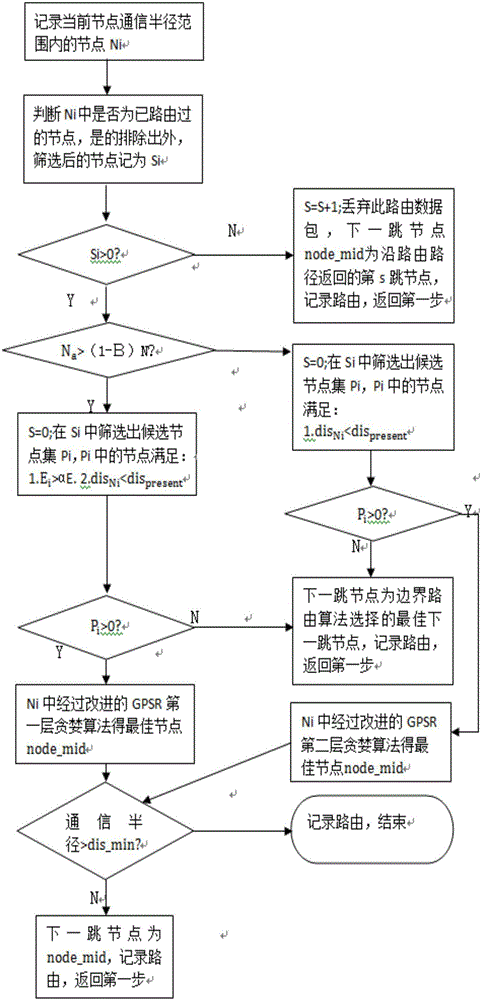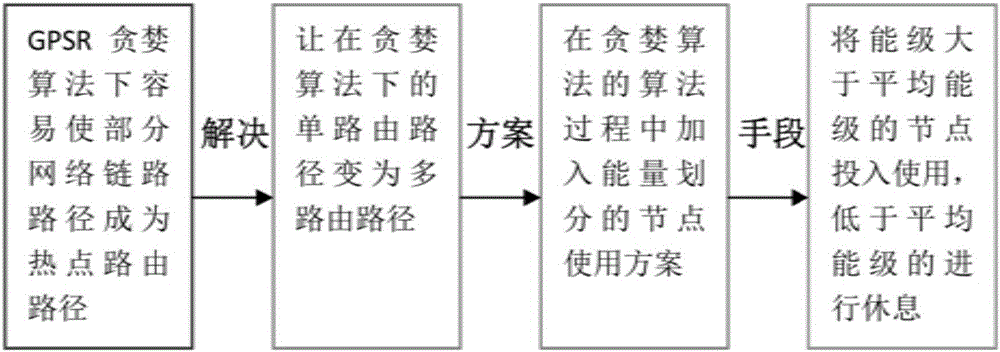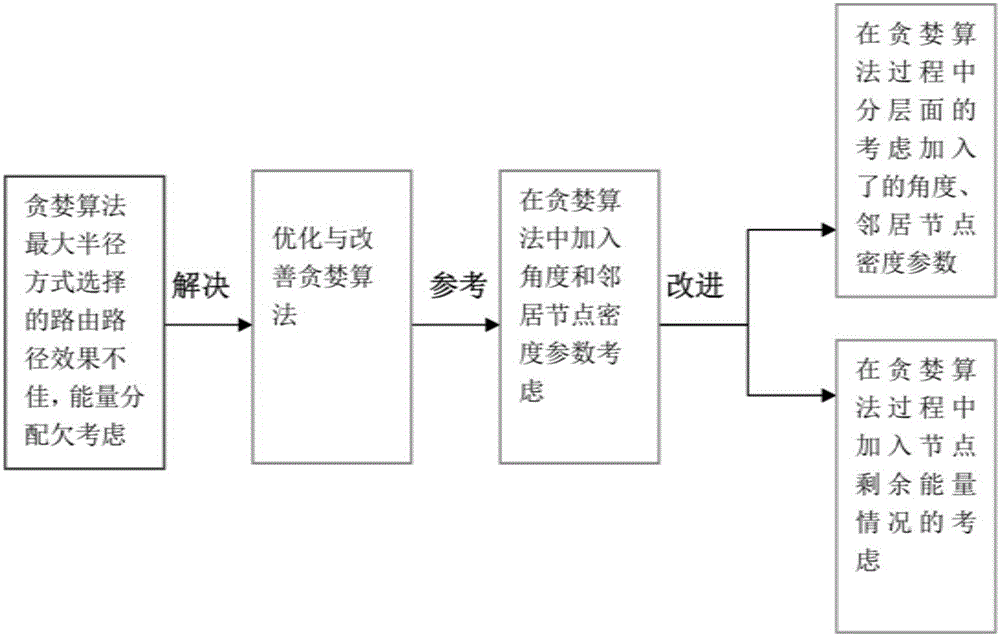Energy collection wireless sensor network routing algorithm based on geographical location
A wireless sensor and energy harvesting technology, applied in the research field of wireless sensor networks, can solve the problems of unimaginable workload and cost of the battery, repeated charging when the battery is exhausted, and limited life.
- Summary
- Abstract
- Description
- Claims
- Application Information
AI Technical Summary
Problems solved by technology
Method used
Image
Examples
Embodiment
[0071] Such as figure 1 As shown, the wireless sensor network routing algorithm for energy harvesting based on geographic location in this embodiment includes the following steps:
[0072] 1) The improvement idea and design scheme of the greedy mode of the improved GPSR protocol
[0073] How to make the energy usage of nodes more balanced and reasonable, and prolong the service life of the network? Obviously, it is necessary to change the single-routing path method of the greedy algorithm to a multi-routing path method, so that the task of routing and transmitting information is evenly distributed to more network nodes to complete, rather than being undertaken by a very small number of hot routing nodes.
[0074] Here is a very direct idea: when some nodes are over-committed to using energy storage and the gap between other nodes is constantly widening, they should take a break properly; Increase its routing work tasks. In this way, the routing path can be made more diversi...
PUM
 Login to View More
Login to View More Abstract
Description
Claims
Application Information
 Login to View More
Login to View More - R&D
- Intellectual Property
- Life Sciences
- Materials
- Tech Scout
- Unparalleled Data Quality
- Higher Quality Content
- 60% Fewer Hallucinations
Browse by: Latest US Patents, China's latest patents, Technical Efficacy Thesaurus, Application Domain, Technology Topic, Popular Technical Reports.
© 2025 PatSnap. All rights reserved.Legal|Privacy policy|Modern Slavery Act Transparency Statement|Sitemap|About US| Contact US: help@patsnap.com



